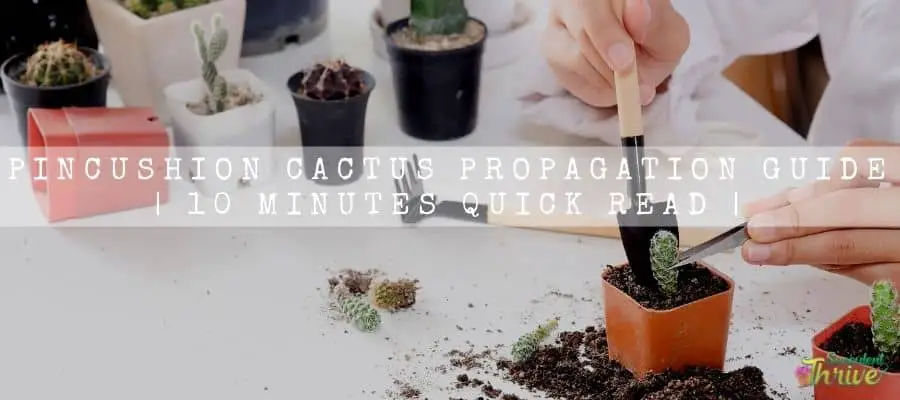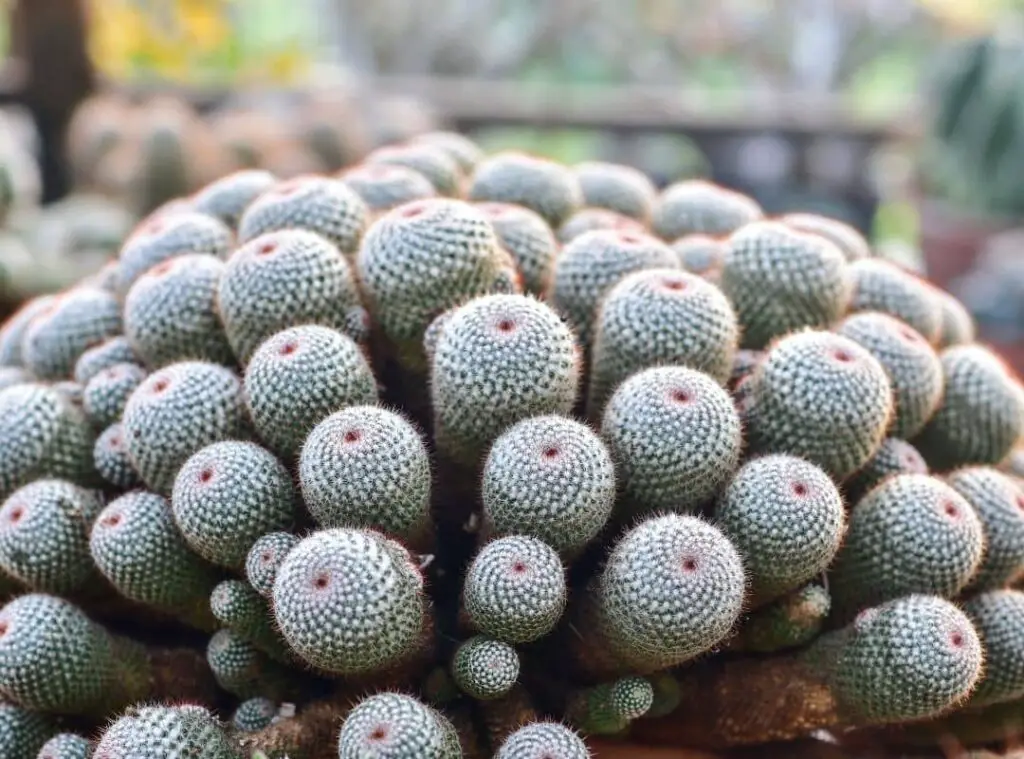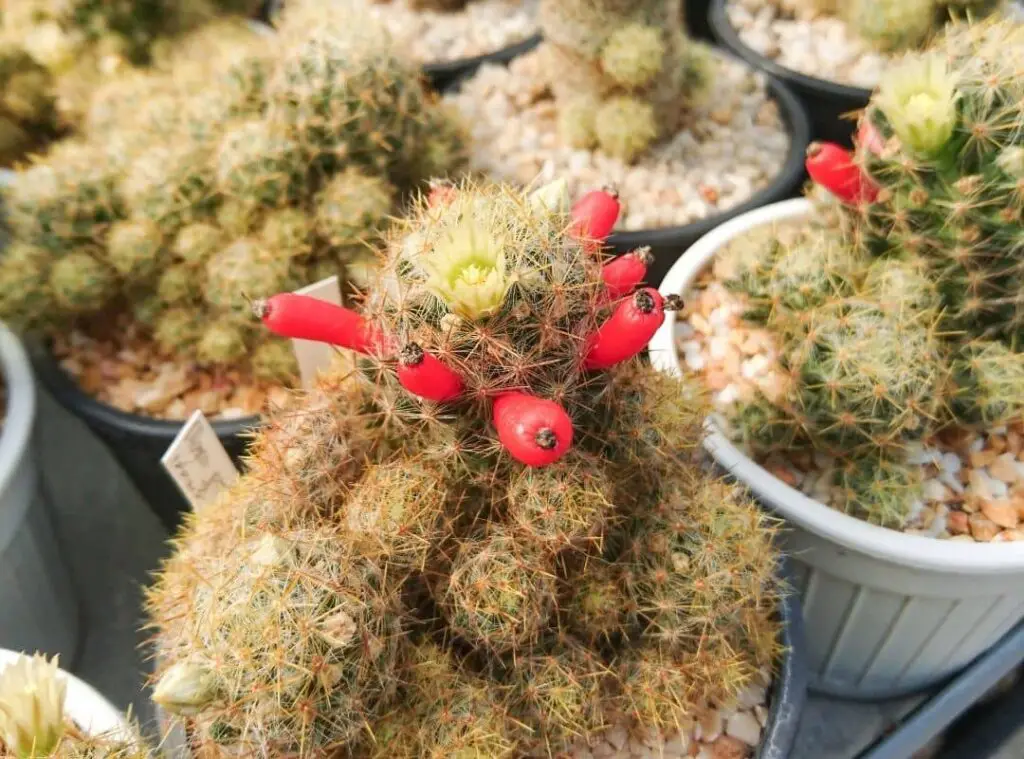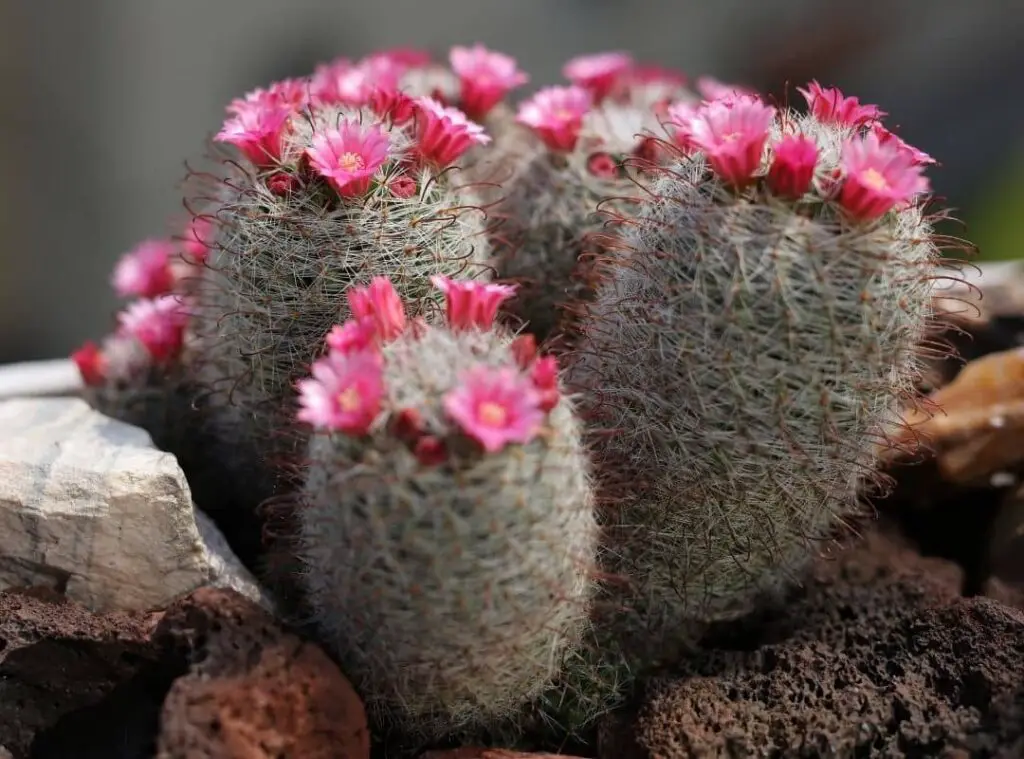Mammillaria cactus or pincushion cactus is a popular cactus in the world. Despite their popularity, many people do not know how to propagate pincushion cactus. If you want to know pincushion cactus preparation methods keep on reading.

What is pincushion cactus?
If you fulfill the basic growing requirements of the pincushion cactus, they will grow vigorously and rapidly.
Further they could clump quickly whilst making so many offsets as well.
One more interesting feature of the pincushion cactus is that they could produce flowers and those flowers could stay alive for a longer period.
As the time passes, those flowers would transform into edible fruits as well. You could reap the seeds from those fruits.
There are only two ways to propagate pincushion cactus and they are by using the offsets and using the seeds of the plant. Both these methods are very easy to do.
Methods of propagation
Offsets
Many people prefer to propagate the pincushion cactus using the offset method as they find this method is the best.
You all know that when both cactus and succulents grow older and mature, they usually produce pups which you know as offsets.
Those offsets would form in clusters around the base of the plant. So you could simply take them off and use them for propagation.
Having said that, there could be some people who wish to leave them just like that so that it could help to fill the container. It is their personal choice.
To start things off, you need to first protect yourself by wearing thick gardening gloves. After that you could take the pups away from the mother plant gently.
To remove them you could simply tug them. Avoid harming the mother plant when you are doing this. This is a quite simple process to practice.
However, if you wish to do it with a knife, that is also possible. However, you need to make sure that the tools you are using should be sterilized and sharp as well.
After that you could place them on a paper towel and wait for some days.
cut edges wounds would heal by that time. This is a very crucial step you need to practice when doing this process. It would avoid any potential rotting of the pup when you replant them in new conditions.
When the wound becomes callous, you could go ahead and plant them in a well-draining soil cactus mix.
When you choose the pot, you need to ensure that you are growing them in a tiny sized shallow dish. That will allow them to grow comfortably. Further it would allow them to become rootbound as well.
Once you complete all these, you could start watering them. You could continue taking care of them like you usually do after that

Seeds
If you wish to practice the seed propagation method, best is to do it in the spring season.
When selecting a soil mix to grow them, you need to make sure that you are using cacti mix. After that you simply have to place the seeds on the soil mix top surface.
Next you could add a thin layer of sand. Finally you may place the specimen in a warmer place. However, you need to make sure that the temperature there is not less than 70 degrees Fahrenheit (21 degrees Celsius).
You need to keep the top layer moist in condition. As such you need to make sure that you keep watering them constantly. It will avoid drying out of the seeds.
When you spot the plants have become considerably sized, you could pot them individually or together depending on your wish.
How to treat after propagation
These are naturally hardy sets of plants, and they could thrive well in harsh conditions. So, you do not have to look after them all 24 hours. Instead, they would require a little maintenance from you.
Watering
These cacti could withstand the drought conditions. So they can live without water for a short period.
However, during their growing season, you need to add more water when you spot the top surface of the soil is bone dry. When watering, ensure that you are watering them thoroughly.
Apart from that, you should empty the drip tray when the additional water runs off. Keep in mind that you should not expose them to sitting water and dampness for prolonged periods.
If you make them sit in a dish of water, that will have a fatal impact on your beloved cactus plant.
When it comes to watering in fall, you need to water them once a month or it could be even less than that.
However, you need to provide some water as then they will not be shriveled. Winter season is the dormancy period of these cactus as such generally they would not require any moisture from you during winter.
You could consider misting them on and off so that they will not become bone dry. On the other hand, keep in mind over watering could have worse repercussions than what you do with under watering them.
In addition to the above, do not leave these cacti in high humidity areas such as bathrooms, kitchens etc.
Moreover, do not place the plant in locations where there is a humidifier. They are fond of dry weather conditions as they have naturally constructed to survive in such conditions in their natural habitats.

Sunlight
These cacti are fond of sunlight. They would love more and more of it. As such when you are growing these cacti, you should provide sunlight as much as you can.
In fact, providing a grow light would not fulfil this requirement if you were growing these cacti in a place where it can’t gain adequate sunlight.
The exposure of plenty of sunlight would allow them to show up their flowers in various colors. So, it is better if you could provide them full day sunlight right throughout the year.
Temperature
If you expose these plants to cold temperatures, that would be deadly for them. Winter weather conditions could be so harsh that these plants cannot withstand, especially when you have grown them outdoors.
So, the best thing you could do to overcome this problem is bringing them indoors so that you could protect the plant from those unhealthy conditions.
Best temperature range for them would be between 10 degrees Celsius to 24 degrees Celsius. (50 degrees Fahrenheit 75.2 degrees Fahrenheit).
Fertilizer
Pincushion cactus, do not depend on a lot of fertilizers. . Having said that, if we consider this on a long-term basis, it would be beneficial for the cactus growth.
As such best is to add a slow-release fertilizer in the potting medium. If you wish to have better results, you could feed them with a fertilizer which is specifically designed for cactus.
When you apply them, best is to do it once every fortnight during their growing season. Avoid feeding them in the winter season though.

Best Pot
Best pot type to grow these cacti would be terracotta containers. The reason to use these pots is that their water evaporation is faster when compared to the rest of other materials.
They would be perfect fits for cactus gardens as well. Apart from that, ensure that your pot is carrying enough draining holes also.
Soil condition
Growing them in the right soil mix is very important. That is simply because even if you water them properly and if you are not using the right soil mix, it could badly impact on your plant.
Ideally the soil mix needs to be a fast draining one so that it could drain away the excess water. I would recommend using a commercial cactus or even a succulent mix.
If not, you may also make a right soil mix on your own at home too. To do that, you only need to add pumice and coarse sand in the regular potting soil at the right ratios.
Conclusion
As you may already understand, pincushion cactus will thrive well even if you provide them a little care.
They would be great picks if you particularly have a smaller space to grow the plants.. Even a fresher in gardening could start growing them due to their easy maintenance.
However, you need to fulfill the basic care for them. Further hope this article was helpful for you to improve your knowledge on pincushion cactus propagation.
So why wait? Hurry up and start growing the pincushion cactus.
Read More: Mammillaria Herrerae | 14 Care Secrets Nobody Told You |
